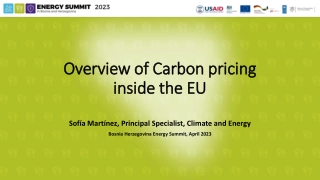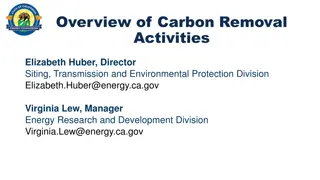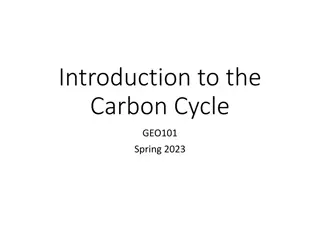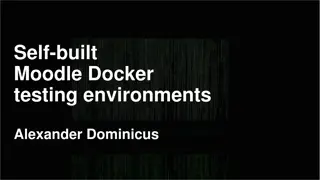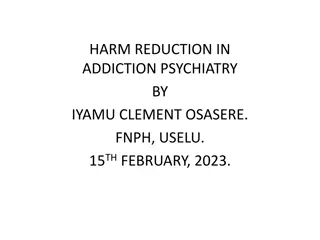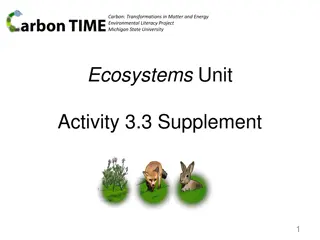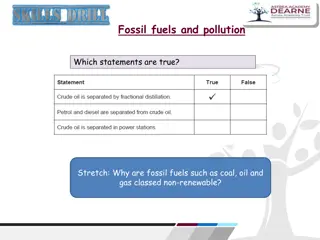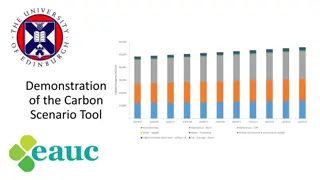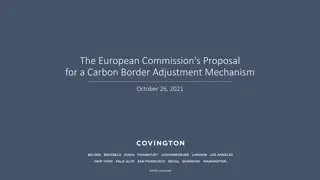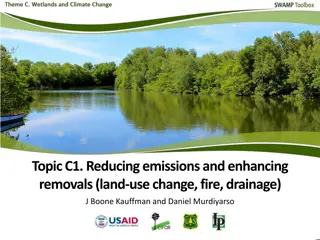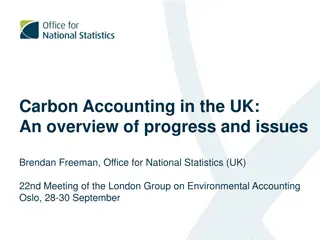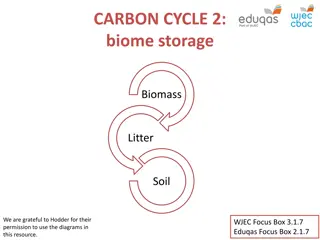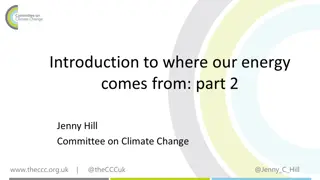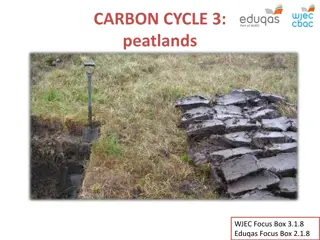Carbon Reduction Code for the Built Environment
Taking steps towards reducing carbon emissions in the built environment is crucial for meeting sustainability goals. This code emphasizes the importance of early carbon savings, optimizing designs, and measuring performance to achieve net zero targets by 2050. It provides a framework for organizations to commit to carbon reduction and report progress, focusing on core commitments for all, clients, and the supply chain. Utilizing existing technologies efficiently and making informed decisions on building materials and approaches are key strategies outlined in the code.
Download Presentation

Please find below an Image/Link to download the presentation.
The content on the website is provided AS IS for your information and personal use only. It may not be sold, licensed, or shared on other websites without obtaining consent from the author.If you encounter any issues during the download, it is possible that the publisher has removed the file from their server.
You are allowed to download the files provided on this website for personal or commercial use, subject to the condition that they are used lawfully. All files are the property of their respective owners.
The content on the website is provided AS IS for your information and personal use only. It may not be sold, licensed, or shared on other websites without obtaining consent from the author.
E N D
Presentation Transcript
Carbon Reduction Code for the Built Environment Carbon Reduction Code for the Built Environment
So what about carbon emissions? UK Government Target of Net Zero by 2050 Linear reduction not fast enough to avoid 1.5C warming current emissions are exceeding our carbon budget Carbon dioxide persists in the atmosphere for 100-200 years Radiative forcing effect every tonne of carbon emitted now continues to heat the planet every year So we need to save as much carbon as possible as early as possible We will need to make most of our carbon reductions with existing technologies
Deciding what we need to build, how we should build, and with which materials and approaches Do we need to build or is there another solution? Don t build Build less with less Do we need to build as much? Build clever Use materials with lower capital carbon What should we build with? Build efficiently Use less material & reduce waste Can we optimise the design, and reduce construction waste?
Taking a whole life perspective How long will this asset be used for? Will creating more embodied carbon save carbon over the lifecycle? How can we make its use more energy efficient? How can we make it easier to maintain?
The importance of measuring If you do not measure it, you cannot improve it Lord Kelvin, 3 May 1883 Learning from real performance: CALCULATE AND OPTIMISE carbon in the design CALIBRATE design models against real performance CONTROL processes on construction sites USE standards, e.g. PAS2080 MONITOR AND MANAGE e.g. waste in construction, energy in use ASSESS AND DECLARE actual embodied carbon MEASURE, MONITOR AND REDUCE operational carbon INVEST in innovation to improve and MEASURE AGAIN
Carbon Reduction Code for the Built Environment First step to facilitate action by relevant parties towards reducing carbon emissions Not intended to replace PAS 2080 (or equivalent standards) Framework for organisations to make a public commitment and report on progress towards Net Zero Three parts: 1. Core commitments for all organisations 2. Commitments for client organisations 3. Commitments for supply chain organisations
Development of the Code Drafted by CSIC s Achieving Net Zero Industry Working Group with input from > 30 professionals Trialled by NACF, Environment Agency and Skanska (on behalf of SCS JV on HS2) Aligned with and supported by CLC s C02nstruct Zero initiative Aligns with the UK Government s Procurement Policy Note PPN 06/21 carbon reduction in procurement
Core Commitments for all organisations: 1.1 We will aim to reduce our direct and indirect (Scope 1, 2 and where appropriate Scope 3)carbon emissions by 75% by 2030 in order to meet zero carbon emissions by 2045(or the relevant government stipulated date, if earlier). 1.2 We will set out our plans to meet net zero by 2045, including annual targets, recognising that the majority of cuts need to be made by 2030. We will publish this, and our progress against it, annually.
What next? Read the code Pledge to comply, or submit a compliance form Organisations pledging or complying will be listed on the website Formal launch aligned with the CLC presence at COP26 Code will be updated as government and industry targets alter https://www-smartinfrastructure.eng.cam.ac.uk/carbon-reduction-code
Acknowledgements Karen Alford, Environment Agency Alison Baptiste, Infrastructure Projects Authority Lewis Barlow, Sweco Andrew Barraclough, Wates Group Clare Chamberlain, Crown Commercial Services Keith Clarke, Constructionarium Stacey Collins, Pinsent Masons LLP Tim Embley, Costain and i3P Mark Enzer, Mott MacDonald and CDBB Dee Dee Frawley, CSIC, University of Cambridge Chris Fry, Accelar Janet Greenwood, KPMG Fergus Harradence, Department Business, Energy, and Industrial Strategy Brittany Harris, Qualis Flow Chris Hayes, Skanska UK Colin Holm, Highways England Charmaine Hughes, Manchester City Council Dr Kat Ibbotson, Environment Agency Dr Tercia Jansen Van Vuuren, LOR Centre, University of Cambridge Thomas McNiven, Crown Commercial Services Dr Heleni Pantelidou, Arup Dr Annette Pass, Highways England David Pinder, Green Construction Board Philip Sayer, Considerate Constructors Scheme Dr Jennifer Schooling, CSIC, University of Cambridge Anusha Shah, Arcadis Sally Sudworth, Mott MacDonald Lindsey Taylor, Anglian Water Steven Van Niekerk, HS1 Hannah Vickers, ACE James Wilcox, BE Sustainability Peter Yates, Constructing West Midlands and National Association of Construction Frameworks Special thanks to Janet Greenwood and Keith Bowers, for the discussion that kicked all this off
Thank you Any questions? Carbon Reduction Code for the Built Environment



